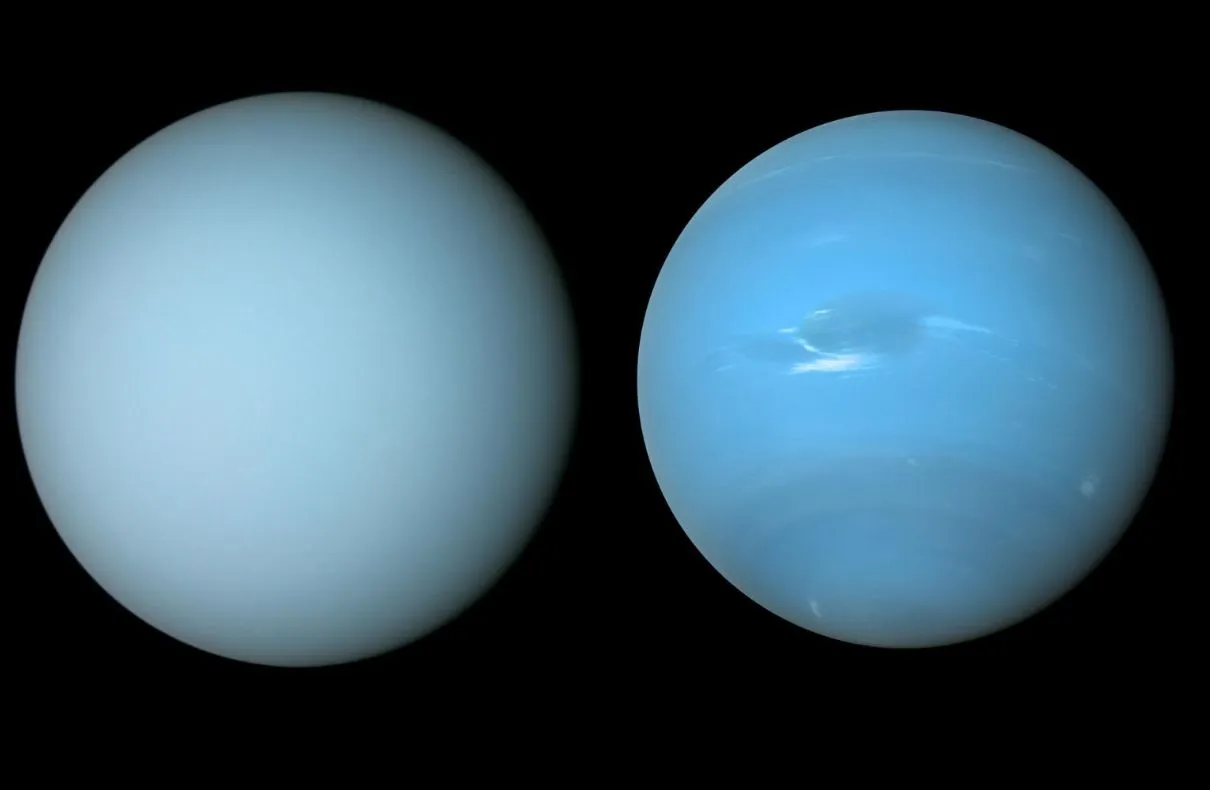
Have you ever wondered what lies beyond our beautiful blue planet? Our solar system is a vast expanse of wonders, and two of its most intriguing members are Neptune and Uranus. Thanks to new colour images, scientists have uncovered fascinating details about these distant giants.
Neptune, named after the Roman god of the sea, is the eighth planet from the Sun. It is strikingly beautiful with its intense blue hue, which is made possible by the presence of methane in its atmosphere. Captured by modern colour imaging techniques, the images of Neptune have revealed intricate cloud formations and ever-changing weather patterns.
Uranus, the seventh planet from the Sun, presents a peculiar feature that sets it apart from the other planets in our solar system – its tilt. Unlike the rest of the planets, Uranus rotates on its side, leading to unique seasons that last for decades. Colour images have allowed us to witness the stunning blue-green colour of Uranus and provided insights into its atmosphere and atmospheric composition.
The Life and Legacy of Cindy Morgan: A Tribute to a Talented Actress
The new colour images of Neptune and Uranus have shed light on various aspects of these enigmatic planets. Here are some of the fascinating discoveries that have been made:
Neptune’s atmosphere is known for its extreme weather conditions, with massive storms and powerful winds. The new images have revealed intricate cloud formations, including the famous “Great Dark Spot” – a giant storm system that rivals Jupiter’s Great Red Spot. Similarly, Uranus displays complex weather patterns, including high-speed winds that can reach speeds of up to 900 kilometers per hour.
By analyzing the colours captured in the images, scientists have gained insights into the atmospheric compositions of Neptune and Uranus. These planets are primarily composed of gases such as hydrogen and helium, but their atmospheres also contain traces of methane, which gives them their distinct blue-green hues.
Some of the new images have also revealed fascinating details about the moons that orbit Neptune and Uranus. For instance, Neptune’s largest moon, Triton, was found to have geysers erupting nitrogen gas into space. Additionally, Uranus’ moon, Miranda, exhibits a diverse and varied terrain, with cliffs, canyons, and flat regions.
The colour images of Neptune and Uranus play a significant role in our understanding of the dynamics of our solar system. By studying the formation and evolution of these distant planets, scientists can gain valuable insights into the history of our own planet and the universe as a whole.
